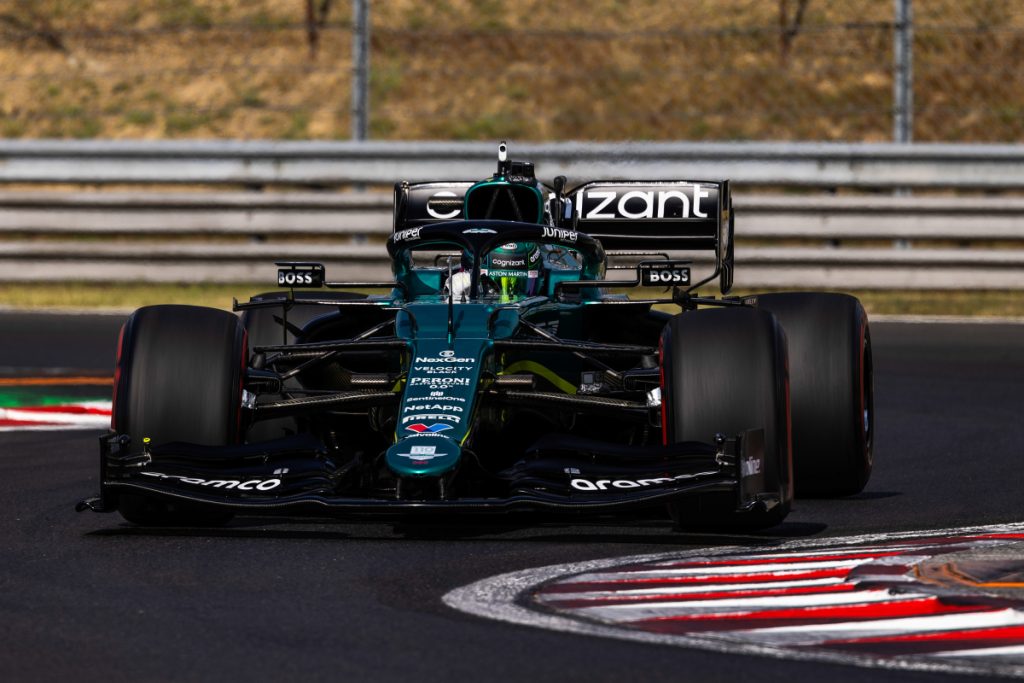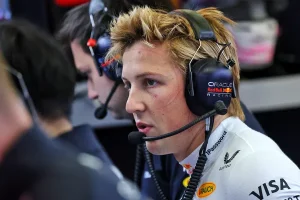BREAKING NEWS: FIA Confirms No Changes to Front Wing Flexibility Regulations for 2025 Amid Ongoing Controversy”

BREAKING NEWS: FIA Confirms No Changes to Front Wing Flexibility Regulations for 2025 Amid Ongoing Controversy
FIA Clears Flexible Front Wings Controversy in Formula 1
The FIA has officially addressed the controversy surrounding flexible front wings in Formula 1, a subject that has fueled significant debate during the 2024 season. Concerns about potential rule violations were initially raised by Ferrari and Red Bull, who questioned the legality of the front wing designs employed by rival teams, particularly Mercedes and McLaren. These concerns prompted the FIA to launch an in-depth investigation into the matter to ensure that the teams’ designs complied with the sport’s technical regulations.
To monitor the situation more effectively, the FIA introduced advanced monitoring cameras starting from the Belgian Grand Prix. These cameras were strategically positioned to observe the behavior of the front wings during high-speed racing conditions, capturing precise data about their flexibility and movement. The introduction of this technology underscored the FIA’s commitment to transparency and adherence to regulations, while also aiming to preemptively address any ambiguities in the rules.
After conducting a detailed examination over several races, the FIA has concluded that there are no violations regarding the front wings on Mercedes and McLaren cars. The investigation revealed that the designs complied fully with the sport’s stringent testing procedures for flexibility. These procedures, which involve applying loads to various parts of the car to measure deflection, are designed to ensure that all components remain within allowable limits. Despite the concerns raised, the wings in question passed all mandated tests, confirming their legality under the current regulations.
The FIA emphasized that the purpose of the investigation was not to penalize teams but to gather valuable data that could inform future regulatory updates. By closely analyzing the performance and behavior of these front wings, the organization aims to enhance its understanding of the technology and its impact on car performance. The findings may ultimately lead to refinements in the rules to address potential loopholes or ambiguities, ensuring fair competition across the grid.
This investigation highlights the ongoing debate over the performance benefits of flexible aerodynamic components. Teams like Ferrari and Red Bull argued that even subtle flexibility in front wings could provide a significant advantage by improving aerodynamic efficiency and reducing drag on straights. However, the FIA’s findings indicated no immediate cause for concern, as the designs adhered to both the letter and spirit of the rules. While the governing body acknowledged the competitive advantages that innovative designs can offer, it maintained that these benefits must remain within the boundaries of the regulations.
For Mercedes and McLaren, the FIA’s verdict comes as a vindication after enduring scrutiny from rivals and media speculation. Both teams consistently maintained that their designs were fully compliant and expressed confidence in the FIA’s investigation process. The decision not only reinforces their adherence to the rules but also highlights the importance of innovation within the limits of the sport’s technical framework.
Meanwhile, for teams like Ferrari and Red Bull, the FIA’s findings may prompt a reassessment of their own development strategies. The controversy surrounding flexible front wings has underscored the fine line between legal innovation and perceived rule-bending. In a sport where every millisecond counts, pushing the boundaries of design is a constant challenge, and such investigations often serve as reminders of the delicate balance between engineering ingenuity and regulatory compliance.
The FIA’s decision to close the investigation without any penalties also sends a broader message to all teams: that compliance with testing procedures will be the primary benchmark for determining the legality of car designs. However, the organization remains open to reviewing and adapting its regulations to keep pace with evolving technology and maintain a level playing field in Formula 1. The monitoring cameras introduced during this investigation are likely to become a permanent fixture, enabling real-time oversight and providing an additional layer of transparency.
Despite the resolution of this particular controversy, discussions about the impact of flexible aerodynamic components are far from over. As teams continue to explore innovative ways to gain an edge, the FIA will likely remain vigilant in monitoring developments and ensuring that the sport’s regulations evolve in step with technological advancements. The 2024 season has already highlighted the growing importance of aerodynamics in shaping race outcomes, and future seasons are expected to bring even greater scrutiny of design innovations.
In conclusion, the FIA’s thorough investigation into flexible front wings has reaffirmed its role as the ultimate arbiter of fairness and compliance in Formula 1. By clearing Mercedes and McLaren of any wrongdoing, the organization has provided clarity on a contentious issue while paving the way for potential regulatory updates. As the sport continues to evolve, the balance between innovation and regulation will remain a critical factor in maintaining the integrity and excitement of Formula 1 competition.





